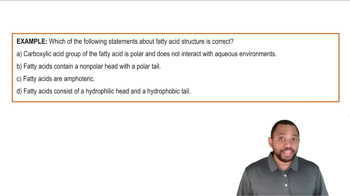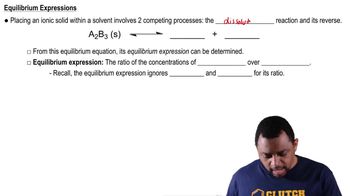Rank the following molecules based on amount of energy stored in them in increasing order (per mol).
I. Sucrose II. Arachidic III. Glucose IV. Behenic (22:0)
 Verified step by step guidance
Verified step by step guidance Verified video answer for a similar problem:
Verified video answer for a similar problem:



 3:8m
3:8mMaster Total Energy from Fatty Acids Concept 1 with a bite sized video explanation from Jules
Start learning